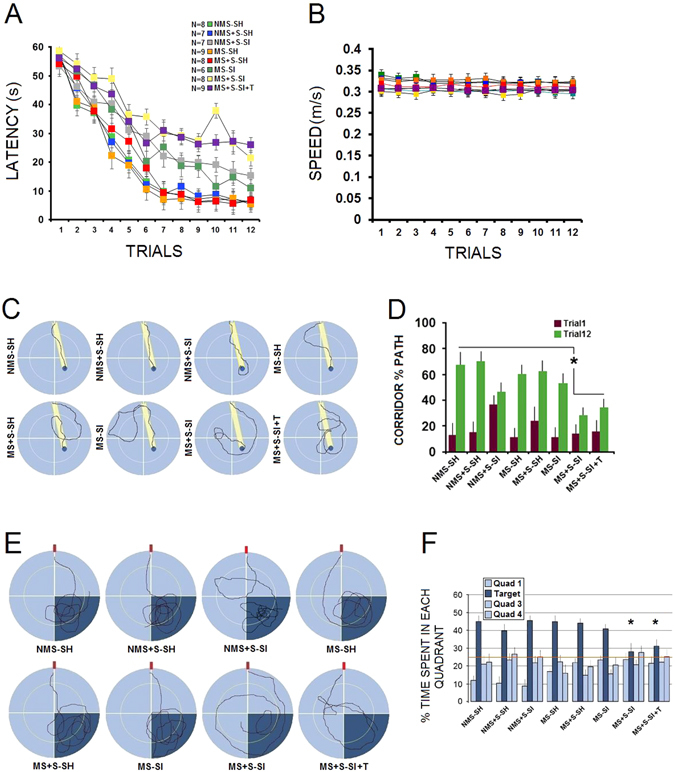Figure 4.

Combined ancestral and adulthood stress impair spatial working and reference memory. (A) Latency or time spent to find the hidden platform in the Morris water task using a one-day testing protocol and probe trial after stress. MS + S-SI and MS + S-SI + T rats displayed impaired spatial working memory when compared to controls. (B) Mean swim speed revealed no group differences. (C) Representative swim error in the last trial and (D) corridor percent time in the first and last trials indicating inaccurate swims relative to the platform location only in MS + S-SI and MS + S-SI + T rats. Yellow strips in plots indicate required swim corridors (Whishaw corridor) to the platform. (E) Representative probe trial trajectories illustrating focal search within the target quadrant in all groups except MS + S-SI and MS + S-SI + T rats. (F) The mean percentage of time spent in four quadrants of the task during the probe trial after completion of the single-session hidden platform paradigm. Rats in MS + S-SI and MS + S-SI + T groups showed no preference to spend time in the target quadrant (dark blue) indicating impaired reference memory. Asterisks indicate significant differences: *p ≤ 0.05; Repeated-Measure and One-Way ANOVA. Error bars show ± SEM.
